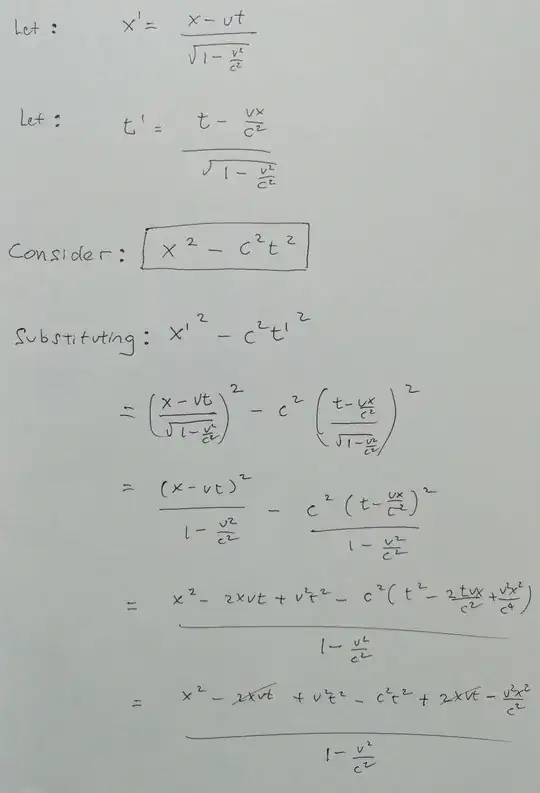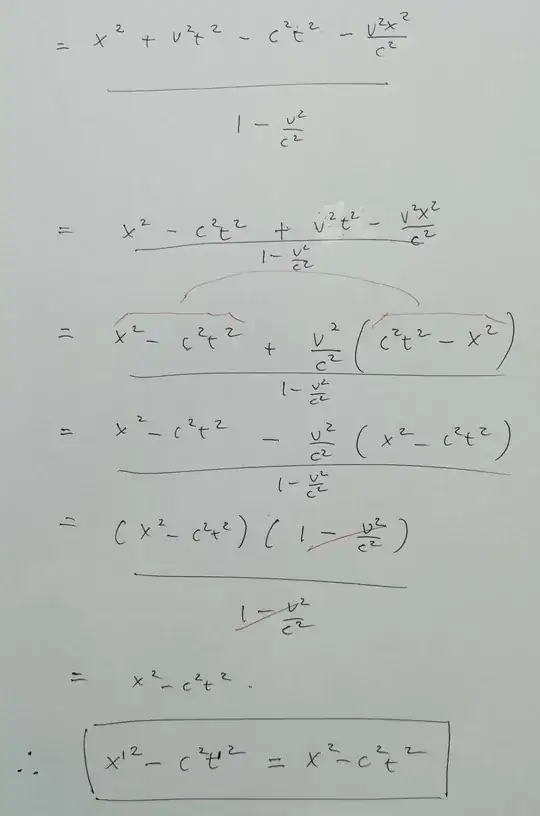Finding invariant equations in special relativity is relatively easy once you know about contra/covariance.
Define a contravariant vector as any vector which transforms as
$$V'=\Lambda\cdot V^\nu$$
where
$${\Lambda}=\pmatrix{\gamma&-\beta\,\gamma\\
-\beta\,\gamma&\gamma}$$
Is the Lorentz matrix. Contravariant vectors are often denoted with a superscript index, like $V^\mu$.
Now define a covariant vector as a vector which transforms as $V'=({\Lambda^{-1})^T}\cdot V$, here $\Lambda^{-1}$ is just the inverse of the Lorentz matrix and you can find it by replacing $\beta\rightarrow-\beta$. Here $^T$ means taking the transpose. Contravariant vectors are often indicated with a subscript index, like $V_\mu$.
Now every time you contract a contravariant vector with a covariant vector you get an expression which is invariant under Lorentz transformations. A contraction is then defined using either of these expressions $V\cdot W=V_\mu W^\mu=V^TW$.
\begin{align}
V'\cdot W'&=V'_\mu W'^\mu\\
&=((\Lambda^{-1})^TV)^T \Lambda W\\
&=V^T\Lambda^{-1}\Lambda W\\
&=V^TW\\
&=V\cdot W
\end{align}
If you have a contravariant vector you can easily construct a covariant vector by contracting it with ${\eta_{\mu\nu}}=\pmatrix{-1&0\\0&1}$. For example if you contravariant vector is $(ct, x)$, your covariant vector is $(-ct, x)$. Contracting these gives $-c^2t^2+x^2$, which is invariant.

